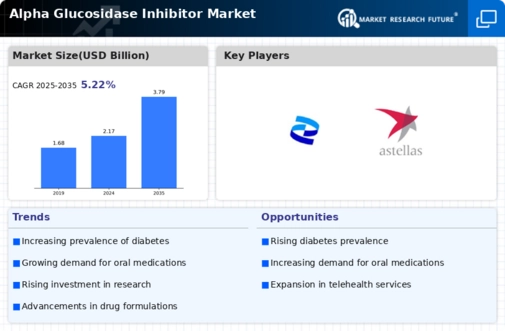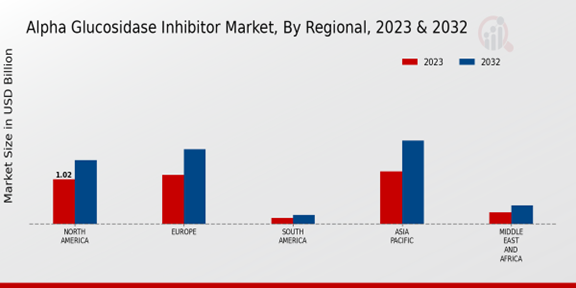Alpha Glucosidase Inhibitors Market Summary
The global alpha glucosidase inhibitor market is projected to experience substantial growth from 2.17 USD billion in 2024 to 3.79 USD billion by 2035.
Key Market Trends & Highlights
Alpha Glucosidase Inhibitor Key Trends and Highlights
- The market is expected to grow at a compound annual growth rate of 5.19 percent from 2025 to 2034.
- By 2035, the market valuation is anticipated to reach 3.79 USD billion, reflecting a robust expansion.
- in 2024, the market is valued at 2.17 USD billion, indicating a solid foundation for future growth.
- Growing adoption of alpha glucosidase inhibitors due to the increasing prevalence of diabetes is a major market driver.
Market Size & Forecast
| 2024 Market Size | 2.17 (USD Billion) |
| 2035 Market Size | 3.79 (USD Billion) |
| CAGR (2025-2035) | 5.22% |
Major Players
Bayer AG, Novo Nordisk A/S, Johnson Johnson Services, Inc., Pfizer Inc., GlaxoSmithKline plc, Novartis AG, Astellas Pharma Inc., Sanofi S.A., Merck Co., Inc., Ono Pharmaceutical Co., Ltd., Roche Holding AG, Eli Lilly and Company, Boehringer Ingelheim International GmbH, Takeda Pharmaceutical Company Limited














Leave a Comment